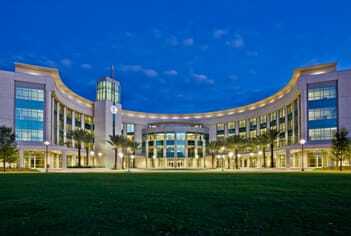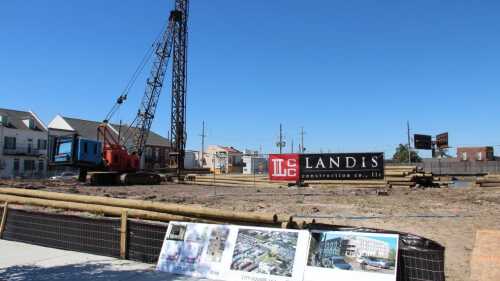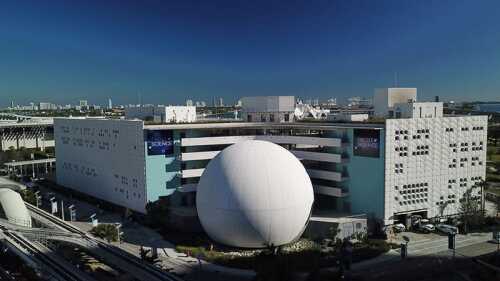Harry Potter has worked his magic in the central Florida area. “He waved his magic wand and boosted the Universal Orlando park’s attendance by almost 40 percent,” says Gregg Logan, managing director, RCLCO Real Estate Advisors in Orlando, Florida, “having a positive impact on hotel occupancy and tourist tax collections.”
The central Florida real estate market is clearly in recovery, with slow and steady continuing improvement anticipated over the next several years, adds Logan, who is currently chair of the Central Florida District Council and a member of ULI’s Community Development Council. “In the short term, we are already seeing significant demand from investors picking up developed and partially developed residential lot properties, capitalizing on low prices and an improved demand outlook,” he says. “The Orlando area is already seeing strong multifamily interest, including acquisitions of existing properties as well as new development in strong locations, especially for properties close to job centers where the jobs-to-housing ratios are high and access to shopping and services is convenient.”
New large-scale residential developments adjacent to growing job centers, such as Tavistock’s next phase of development at Lake Nona in Orlando, are receiving strong interest from builders for new lot inventory, Logan says.
“Although many commercial real estate projects were slowed or put on hold during the Great Recession, Ustler Properties moved ahead with the first eco-friendly office building in downtown Orlando,” says Logan. “They are busy making final preparations to open a 105,000-square-foot [9,765-sq-m] building in the spring that lead tenant GAI Consultants, a large engineering firm, will soon call home.”
The Orlando area is seeing a gradual improvement in both demand for land and in pricing, starting with developed lots and entitled residential land in good locations, says Steve Flanagan, senior adviser in the Maitland office of Land Advisors Organization. “As usual, demand for retail and office land will lag unless someone has a specific use for a specific parcel,” he adds. “Land in the wrong location has little demand.”
Orange County has adopted policies that have severely hampered the ability to plan and entitle land for residential growth on the east side, Flanagan continues, causing a boom in demand for developed and entitled land in areas including Randal Park, which is in the final planning stages for a 1,100-home residential community.
“The story of central Florida has always been about job growth and this recovery will be the same,” says Flanagan. “Historically, most jobs in central Florida have been concentrated in the I-4 corridor. However, Medical City in southeast Orlando and the University of Central Florida area in east Orange County [and] promise to be two of the catalysts this time.”
Buoyed by tourism, MacDill Air Force Base, a robust port operation, and the University of South Florida—among other drivers—Tampa Bay is doing considerably better, says Bruce Erhardt, executive director and land broker in the Tampa Bay office of Cushman & Wakefield.
“We’ve landed a few new companies to the area such as Jackson Laboratory, a nonprofit biomedical research institution, which picked Sarasota for a new facility,” says Erhardt. “Tampa is very resilient. Multifamily is very active because fundamentals are good. Tenant-driven projects such as Wal-Mart, Hess, and a new convenience store, WaWa, office, and industrial are lagging a bit because job growth is not coming back as rapidly as we want. We may even have a shortage of single-family lots in ‘A’ locations in 2012.”
The Tampa Bay residential real estate sector will continue seeing better times, agrees W. Stewart Gibbons, president, Southeast Region of CoastOak Group, a Dallas-based real estate development company. Gibbons expects a slow recovery of Tampa Bay residential markets beginning this year. The recovery of the commercial markets will depend on availability of capital and job creation, he adds, although the sectors are likely to be flat this year.
“Tampa Bay has the potential to advance as a region during these difficult times as the many and varied interests are more inclined to work together for the common good than perhaps they have been historically,” says Gibbons, who is chair of the ULI Tampa Bay District Council and a member of ULI’s Community Development Council. “The climate is actually favorable for retuning regulatory entitlements and legislation. Availability of capital for development of new projects is very tight.”
Wiregrass Mall in Pasco, Florida, is an example of a retail project that has effectively transformed a submarket and Encore is an example of state-of-the-art infill with a significant workforce component.





